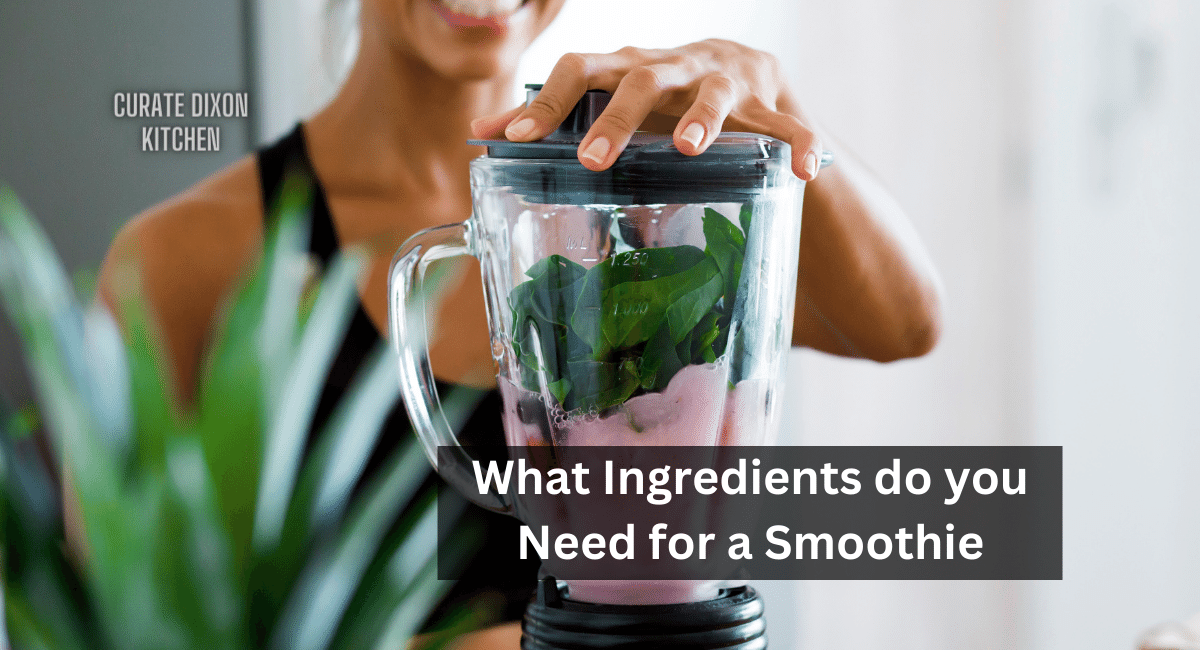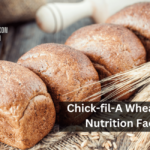A smoothie is a blended beverage typically made with a combination of liquid, fruits, vegetables, and additional ingredients like protein, sweeteners, and flavor enhancers. They are appreciated for their convenience, delicious taste, and nutritional benefits. Smoothies can be enjoyed as a quick breakfast, a post-workout recovery drink, a healthy snack, or even a dessert replacement.
Equipment and Tools:
Before diving into the ingredients, it’s crucial to have the right equipment and tools for making smoothies. The primary piece of equipment you’ll need is a blender. Blenders come in various types, including high-speed blenders, immersion blenders, and personal blenders. High-speed blenders are ideal for achieving the smoothest consistency, while personal blenders are more compact and convenient for single servings.
In addition to a blender, you may also require:
- Cutting board and knife for preparing fruits and vegetables
- Measuring cups and spoons
- Strainer or nut milk bag (for removing pulp or seeds)
- Ice cube trays (for freezing liquid or fruits)
- Mason jars or reusable smoothie cups (for storing and serving)
Base Ingredients:
The base of your smoothie provides the liquid and helps create the desired consistency. Common base ingredients include:
- Liquid Base: You can use various liquids, such as water, milk (dairy or non-dairy), fruit juice, coconut water, or even brewed tea.
- Yogurt and Dairy Alternatives: Greek yogurt, regular yogurt, or dairy-free alternatives like almond yogurt or coconut yogurt can add creaminess and a dose of probiotics.
- Ice and Frozen Fruits: Adding ice or frozen fruits not only chills your smoothie but also makes it thicker and more refreshing.
Fruit Ingredients:
Fruits are a staple in most smoothies, providing natural sweetness and a variety of vitamins and minerals. You can choose from:
- Fresh Fruits: Common fresh fruits for smoothies include bananas, berries (strawberries, blueberries, raspberries), mangoes, pineapples, apples, and oranges.
- Frozen Fruits: These are convenient and can be used year-round. Common choices include frozen mixed berries, tropical fruit blends, and sliced frozen peaches.
- Dried Fruits: While less common, dried fruits like dates or raisins can add natural sweetness and a concentrated flavor.
Vegetable Ingredients:
Smoothies made with added veggies are a great method to improve their nutritional value and flavor profile. Some typical vegetable choices are:
- Leafy Greens: Popular options include spinach, kale, and Swiss chard. Vitamin K and iron are very abundant in these foods.
- Vegetables: Carrots, cucumber, celery, and beets are suitable options. Beets can add a vibrant color and a natural sweetness.
Protein Sources:
To make your smoothie more filling and nutritious, consider adding protein sources like:
- Greek Yogurt: It’s high in protein and contributes creaminess.
- Protein Powder: Whey, plant-based (pea, hemp, rice), and collagen protein powders are just some of the options.
- Tofu: Silken tofu can be blended into a smoothie for a creamy, protein-rich texture.
- Nut Butter: Peanut butter, almond butter, or cashew butter add protein and flavor.
- Seeds: Good sources of plant-based protein include chia seeds, hemp seeds, and flax seeds.
Sweeteners and Flavor Enhancers:
Depending on how you like your food sweetened and flavored, you might wish to add:
- Honey: Honey provides natural sweetness with a unique flavor profile. It pairs well with a variety of fruits.
- Maple Syrup: Maple syrup offers a rich, natural sweetness that complements both sweet and savory smoothies.
- Agave Nectar: Agave nectar is a lower glycemic index sweetener that can be used to sweeten your smoothie.
- Vanilla Extract: The flavor of your smoothie will improve with just a few drops of vanilla extract.
- Spices and Herbs: Smoothies can be made more interesting by including spices like cinnamon, ginger, mint, and basil.
Texture Enhancers:
If you want to adjust the thickness and creaminess of your smoothie, consider these texture enhancers:
- Bananas: Ripe bananas add natural sweetness and thickness to your smoothie.
- Avocado: Provides creaminess and healthy fats.
- Oats: Rolled oats or oatmeal can thicken your smoothie and provide fiber for a filling breakfast option.
Superfoods and Nutrient Boosters:
For an extra nutritional punch, you can incorporate superfoods and nutrient boosters into your smoothies:
- Chia Seeds: Rich in fiber, omega-3 fatty acids, and antioxidants.
- Flax Seeds: A source of fiber and healthy fats, particularly alpha-linolenic acid (ALA).
- Spirulina: Blue-green algae that’s high in protein and other nutrients.
- Acai Berries: A superfood known for its high antioxidant content.
- Matcha Powder: Provides a boost of antioxidants and caffeine.
Creating Balanced Smoothie Recipes:
Creating a well-balanced smoothie involves considering macronutrients (carbohydrates, protein, and fat) and portion control. Tailoring your smoothie to your dietary needs and preferences is essential.
Making a Smoothie:
Now that you have your ingredients ready, it’s time to make your smoothie. Here are the basic steps:
- Prepare Your Ingredients: Wash and chop fruits and vegetables as needed.
- Add Liquid Base: Start with your chosen liquid base in the blender.
- Add Fruits and Vegetables: Add your desired fruits and vegetables.
- Include Protein and Other Ingredients: Add protein sources, sweeteners, flavor enhancers, texture enhancers, and superfoods as desired.
- Blend: Start your blender on low and gradually increase to high for a smooth and even blend. Mix everything together until it’s the consistency you want.
- Taste and Adjust: Taste your smoothie and adjust sweetness, texture, or flavor if necessary.
- Serve: Put the smoothie in a glass or cup and top it off with anything you choose.
Variations and Themes:
Smoothies can be customized to suit different tastes and dietary goals. Here are some popular smoothie variations:
- Green Smoothies: Incorporate leafy greens like spinach or kale for added nutrition.
- Breakfast Smoothies: Include ingredients like oats, nut butter, and protein for a more substantial morning meal.
- Tropical Smoothies: Use fruits like pineapple, mango, and coconut for a taste of the tropics.
- Berry Smoothies: Combine various berries like strawberries, blueberries, and raspberries for a burst of antioxidants.
- Dessert-Inspired Smoothies: Create healthy versions of dessert flavors like chocolate, peanut butter, or strawberry cheesecake.
Smoothie Bowl:
Smoothie bowls are a thicker variation of the traditional smoothie that may be customized with a wide range of add-ins. It’s a popular trend in the world of healthy eating. To make a smoothie bowl, use less liquid and more thickening agents like frozen fruits, yogurt, or avocado.
Storing and Serving Smoothies:
- Proper Storage: Smoothies that are made in excess should be refrigerated in an airtight container. For maximum flavor and nutritional value, consume it within 24 hours.
- Reheating and Serving Options: Smoothies can be enjoyed immediately or frozen into popsicles for a refreshing treat.
Common Mistakes to Avoid:
To make the perfect smoothie, watch out for these common mistakes:
- Overloading with Sugar: Be mindful of sweeteners; too much can make your smoothie high in sugar.
- Ignoring Texture: Balance thickness and creaminess to achieve the desired texture.
- Neglecting Balance: Ensure a balance of macronutrients for a well-rounded meal or snack.
- Using Too Much Liquid: Start with less liquid and add more as needed to avoid a watery consistency.
Allergies and Dietary Restrictions:
If you have dietary restrictions or allergies, there are plenty of alternatives available. For example:
- Vegan and Vegetarian Options: Replace dairy with plant-based alternatives like almond milk, soy yogurt, or tofu.
- Gluten-Free Considerations: Use certified gluten-free oats or avoid oats altogether if you have celiac disease.
- Nut and Dairy Allergies: Choose nut-free or dairy-free options and skip nut-based butter.
Making a smoothie is a delightful and versatile culinary endeavor. Whether you’re a health-conscious individual looking to pack more nutrients into your diet or someone seeking a refreshing and delicious treat, the world of smoothies offers endless possibilities.
Remember that the beauty of smoothies lies in their adaptability. To find the ideal smoothie for your tastes and nutritional needs, you can play around with different ingredient, flavor, and texture combinations. Whether you’re enjoying a simple fruit and yogurt blend or a complex, nutrient-packed powerhouse, the art of crafting a smoothie is a rewarding and delicious journey. So, grab your blender, gather your ingredients, and start blending your way to a healthier and more flavorful lifestyle. Cheers to your smoothie-making adventures!










